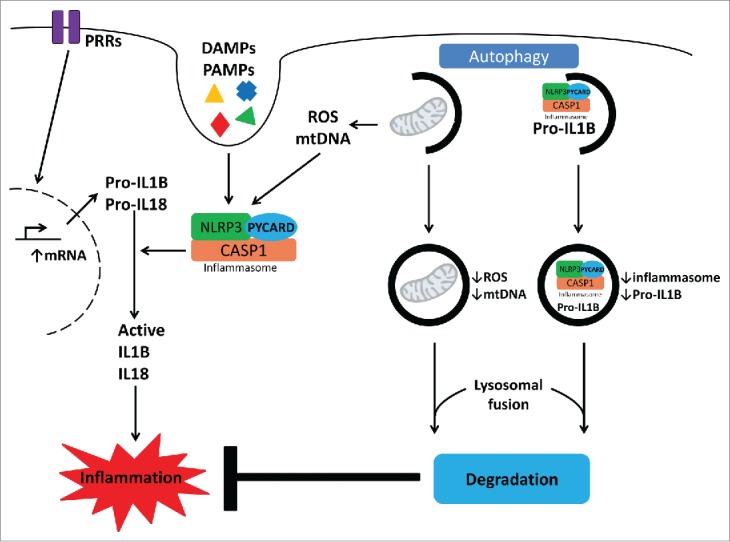Figure 2.

The interplay between autophagy and IL1B-inflammasome activation. Production of the pro-inflammatory cytokines IL1B and IL18 is pivotal in antimicrobial host defense, since this leads to activation of both innate and adaptive immune responses including Th1 and Th17. Autophagy potently regulates these immune responses by several means. First, autophagy inhibits IL1B and IL18 production through digestion of dysfunctional mitochondria and thereby prevention of mitochondrial ROS release that is known to activate the inflammasome. Second, autophagy is capable of targeting inflammasome complexes for degradation, which prevents cleavage of pro-IL1B and pro-IL18 into their biologically active counterparts. Finally, the autophagy machinery engulfs and eradicates pro-IL1B proteins, representing another level of IL1B regulation. DAMP, danger-associated molecular pattern; PAMP, pathogen-associated molecular pattern; PRR, pattern recognition receptor; ROS, reactive oxygen species.
